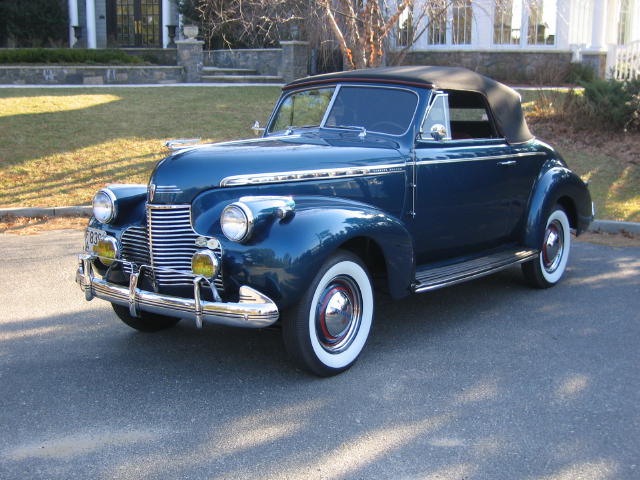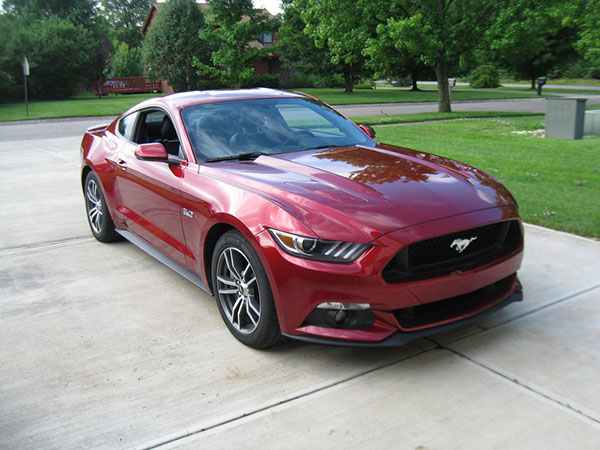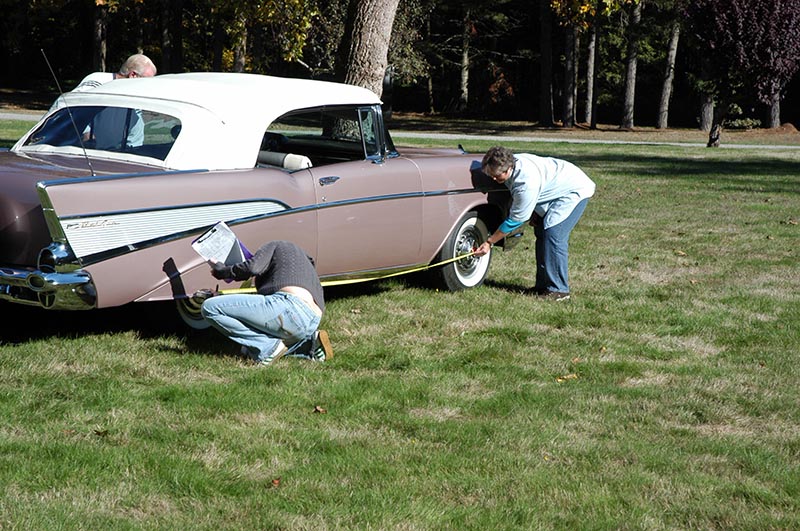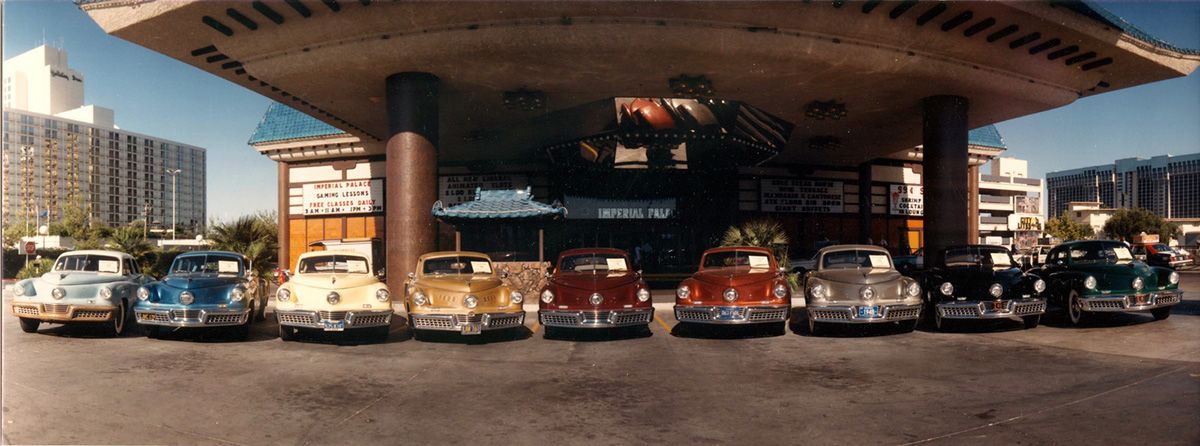
The “Car of Tomorrow”
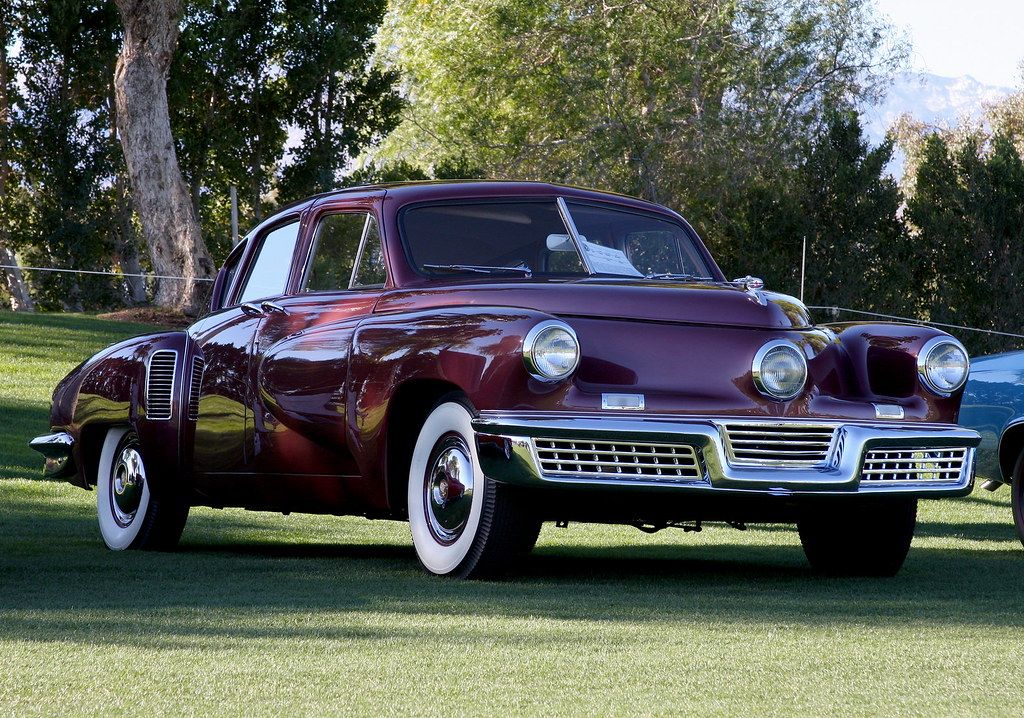
The Tucker 48, envisioned by Preston Tucker of Ypsilanti, Michigan, was a vehicle decades ahead of its time. It is widely regarded as the pioneer of many automotive features that are still seen on the roads today. Often referred to as the” Tucker Torpedo” (the name given to it as a prototype), the Tucker 48 is a classic automobile produced in 1948, with only 51 ever manufactured. Even with all of the promising features that blew the competition out of the water, this “Car of Tomorrow” barely made it off the assembly line, with the company facing countless production issues, and eventually failing due to an SEC investigation that may have been purposeful sabotage.
In this article, we explore the fascinating history of the Tucker 48 and what makes it one of the most captivating stories in automotive history.
Design of the 1948 Tucker Car
The original Tucker Torpedo prototype featured a futuristic design, with a centered driver’s seat and pointed, angular front end. By production, the Tucker 48’s design was considerably more tame but still distinctly unique; with aerodynamic curves, center mounted third headlight, and six tailpipes.
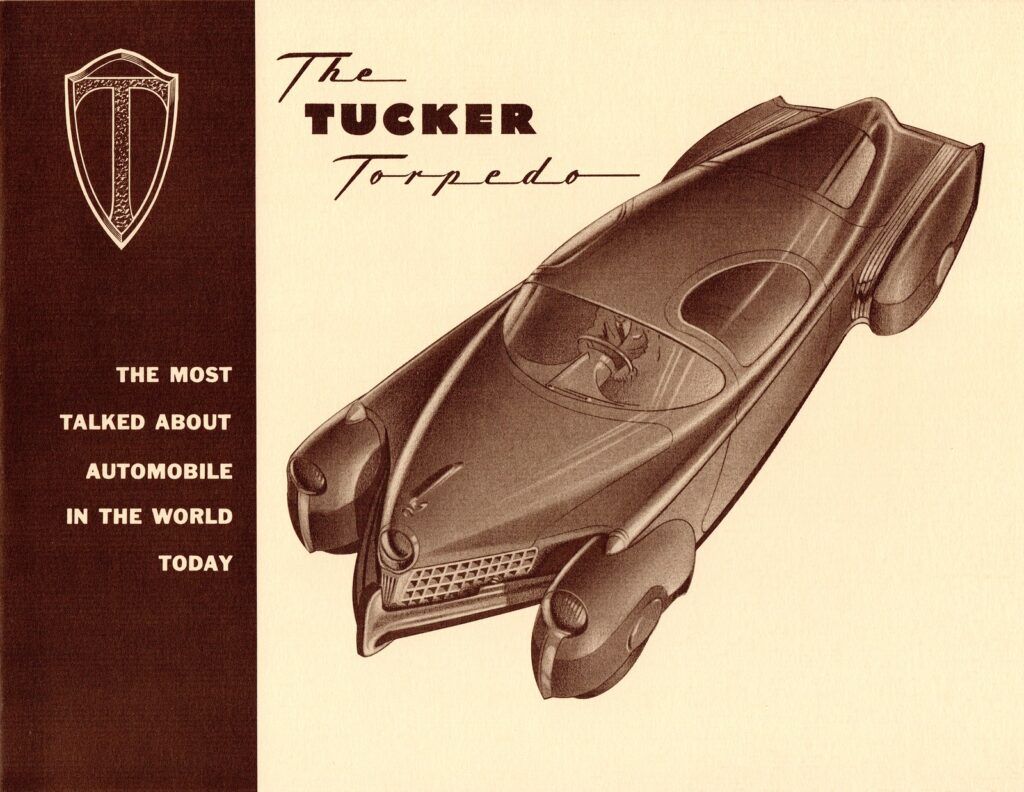
Photo Credit: Auto Historian via Flickr
Preston Tucker placed safety at the forefront of the design, which is showcased in these included features:
- Strong perimeter frame design – increased crash protection
- Integrated roof roll bar
- Steering box behind the front axle – protected the driver during a front-end collision
- Shatterproof windshield glass popped out during an accident
- Fully-padded dashboard
A four-wheel independent suspension also appeared in the Tucker 48 before many other models. This unique feature improved handling, especially at cruising speeds.
Tucker 48 Production and Challenges
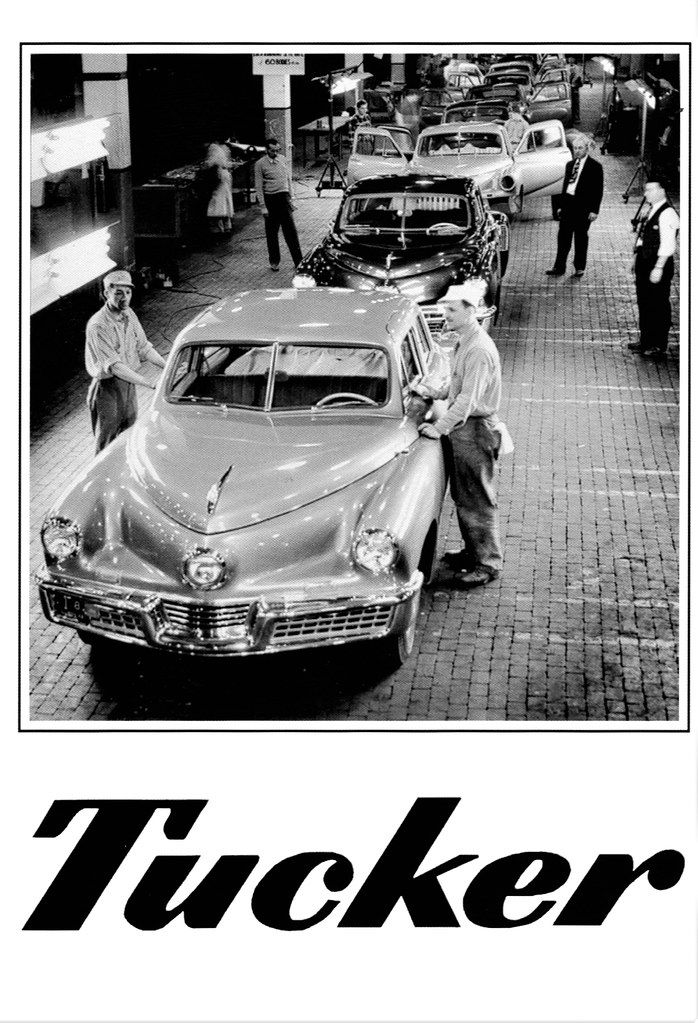
Photo Credit: Auto Historian via Flickr
It seemed that production of the Tucker 48 was doomed to fail before it even began. Preston wanted to use an aircraft-inspired 200-hp 9.65-liter flat-six motor but reverted to the O-335 5.4-liter engine that produced 166 horsepower. Time constraints called for sacrifices, but the engine swapped out was reliable.
While Preston Tucker planned to put a lot of other innovative features into the build, there just wasn’t time before the launch. Other ideas discussed included magnesium wheels, self-sealing tubeless tires, and disc brakes. While these weren’t used at the time, they became commonplace in the industry within decades of the initial ideas.
The world premiere further set the stage for how the future was going to be. On June 19, 1947, more than 3,000 people visited the Chicago factory for a tour, the unveiling, and lunch. Last-minute problems delayed the unveiling, with two of the prototypes exhibiting a snapped suspension and other minor engine issues. Its engine was also loud, so Tucker had the band play as loud as possible in hopes of drowning out the sound.
Tucker faced poor publicity from that initial reveal. These negative outlooks persisted, even though the production unit was far better than the prototype. There were also issues getting two steel mills to supply the raw materials needed because the War Assets Administration rejected the bid.
SEC Investigation and Downfall
Tucker was a clever businessman, but not all of his business practices were seen as strictly legal. For starters, he sold dealer franchises before production, making $6 million that was held in escrow. In September 1946, the Securities and Exchange Commission (SEC) forced Tucker to rewrite the franchise dealer agreement to comply with the SEC.
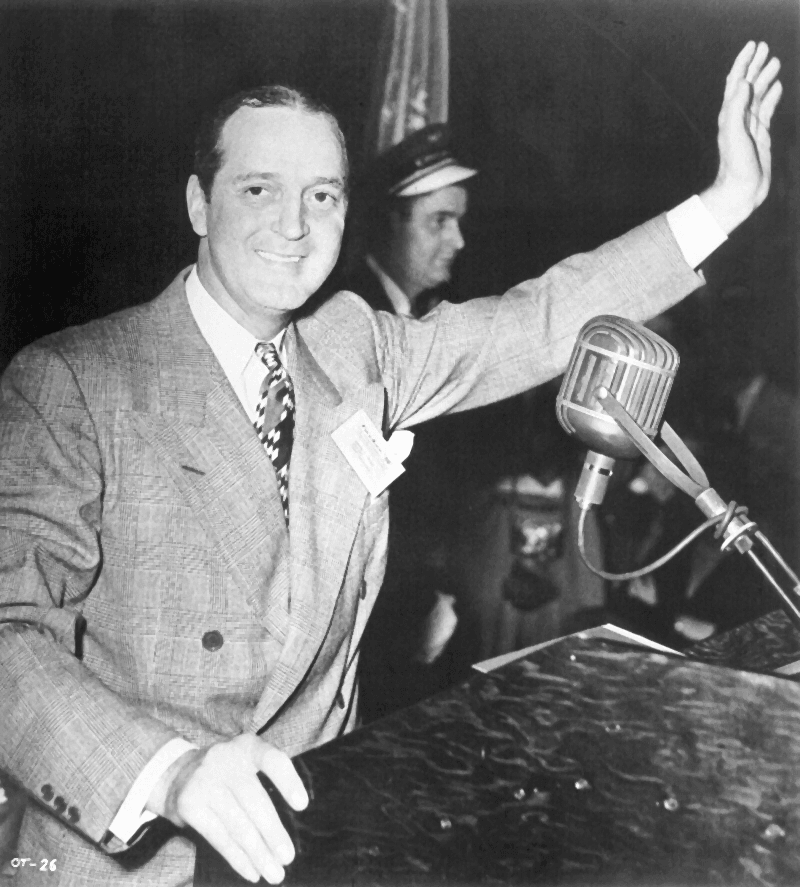
By October, Tucker started another proposal, offering a $20 stock issue contingent on the completed prototype and clearance of the SEC. Trouble also followed with the National Housing Agency. This agency requested that the WAA cancel Tucker’s existing lease. The plant was to be returned to the Lustron Corporation for building prefabricated homes.
However, it was the “Accessories Program” that primarily caught the attention of the SEC. Tucker raised funds by selling accessories before the car’s production began, leading to accusations of deceptive business practices and sparking a formal SEC investigation.
The SEC began a grand jury investigation in February 1949 and contended that Tucker never intended to produce a car at all. Tucker dismissed the accusations, calling them “silly and ridiculous”. By January 1950, the jury returned a “not guilty” verdict for all defendants. Despite all charges being dropped, the negative publicity led to the downfall of the company.
Some people claim that the “Big Three” were behind the downfall of the Tucker 48, but the conspiracy has always been more fiction than fact. Either way, the problems caused dealership owners to back out and the stock value to plummet. By the end, Tucker’s reputation was too far gone to repair.
Legacy Not Forgotten
Today, the Tucker 48 is one of the rarest vehicles in the world. Its fame continues to grow, adding to its collectible value. Models are on display in the Tucker Exhibit at the AACA Museum for collectors to enjoy. The 1988 movie Tucker: The Man and His Dream, starring Jeff Bridges, was made about Tucker’s story. Sometimes, what is deemed a failure, later becomes a success.


